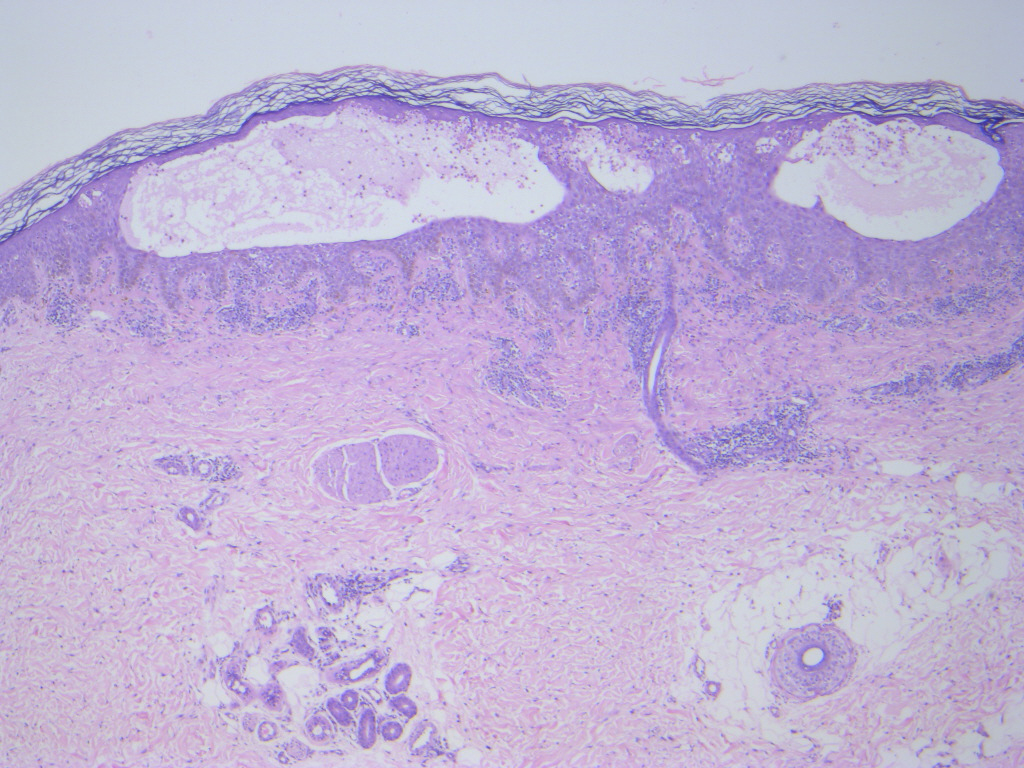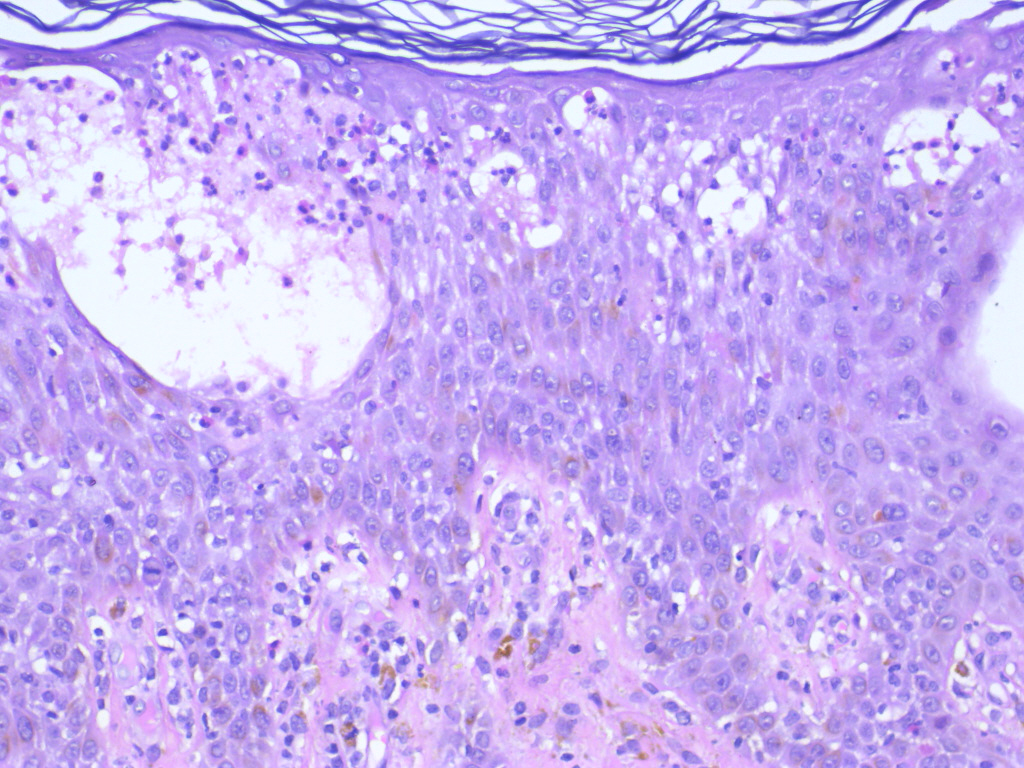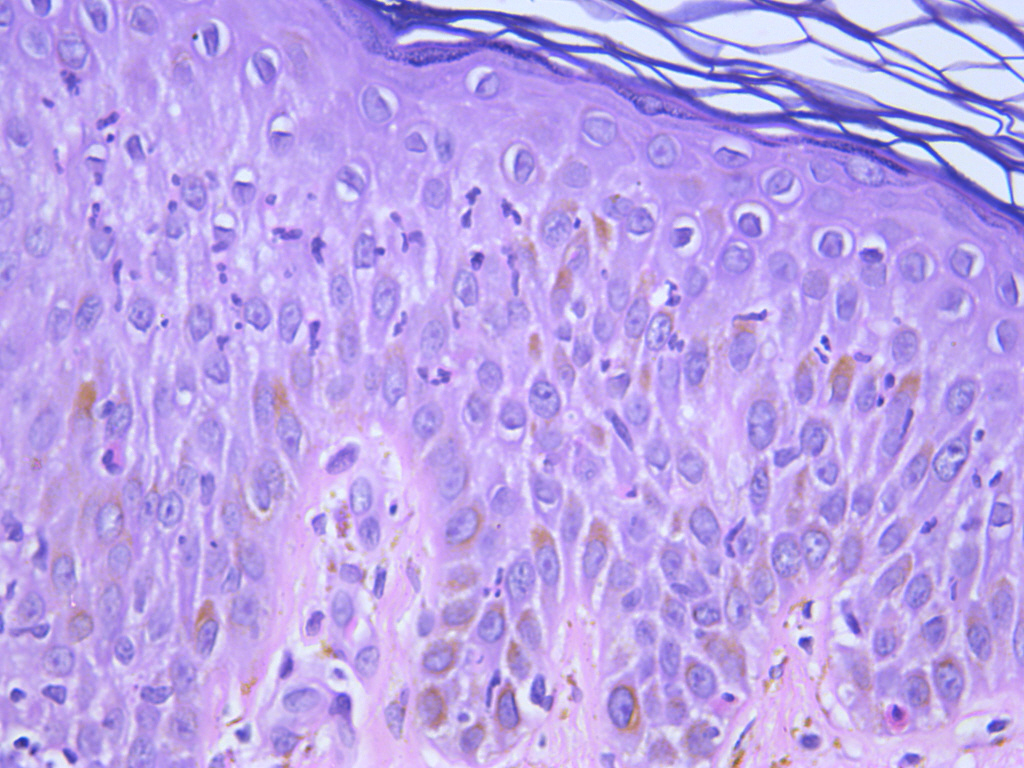Case Number : Case 4629 - 05 August 2025 Posted By: Admin_Dermpath
Please read the clinical history and view the images by clicking on them before you proffer your diagnosis.
Submitted Date :
60 year female, presented with eroded vesicular lesions on itchy erythematous skin since 8-9 years.No oral lesions. Responds to Dapsone. Clinical considerations were dermatitis herpetiformis and bullous pemphigoid.




Join the conversation
You can post now and register later. If you have an account, sign in now to post with your account.